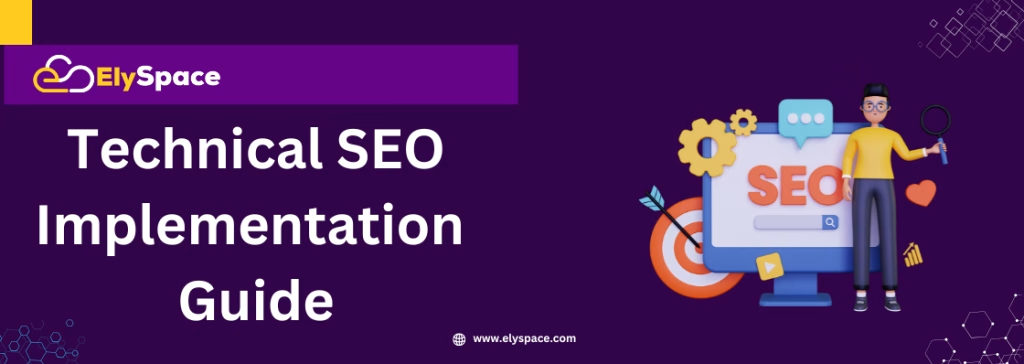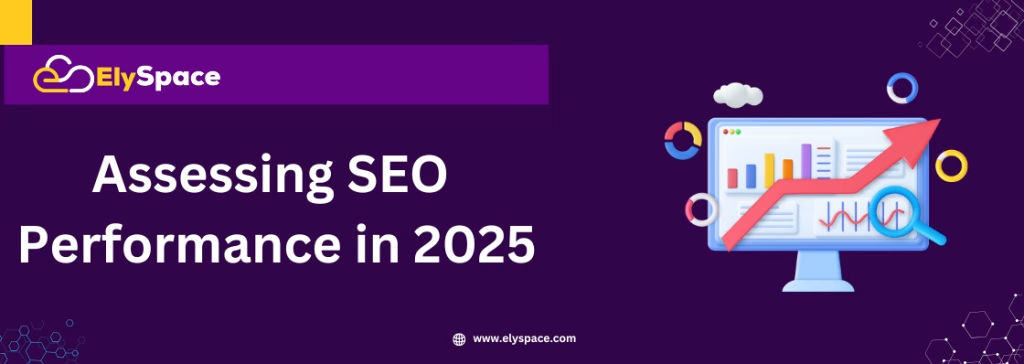Illustration representing future SEO in 2025, featuring digital analytics, search engine algorithms, AI tools, and smarter ranking strategies.
We are witnessing change in Search Engine Optimization (SEO) faster in 2025 than anytime in our lives, as Google’s algorithm evolves to be technically advanced and user-centric in nature. Alongside the aforementioned, artificial intelligence, voice search, and mobile-first indexing are all converging to create a very different experience in search than anything we’ve seen. The important thing to understand for your online success, is that you need to understand modern SEO practices. In this detailed guide, we will explain the current day SEO strategies and ranking factors, as well as the proper methods for online optimization, so you can expect your page to lead the search results in 2025.
A powerful SEO strategy dashboard showing 2025 ranking factors and analytics Alt text: Current day modern SEO analytics dashboard with all 2025 ranking factors, search performance indicators, and improved Google algorithm updates for online search engine optimization
What is SEO in 2025?
SEO in 2025 provides a complete overhaul of old SEO technologies using keyword stuffing and out-of-date optimization methods. SEO is now a comprehensive practice which prioritizes user experience, quality content, and quality technology, all in a very competitive environment. Modern-day SEO is focused on understanding user intent, providing properly grouped and valuable content, and creating optimization strategies for new search formats, including voice search, visual search, and AI-enhanced search.
Key Changes in SEO for 2025
- AI-Powered Search Results: Google’s AI algorithms now have greater contextualization and understanding of the user’s search intent
- Core Web Vitals Evolution: further move to examine user experience beyond load speed within the search engine ranking criteria
- E-E-A-T Enhancement: Experience, Expertise, Authoritativeness, and Trustworthiness still outweigh the previous E-A-T criteria
- Mobile-first indexing: ultimate shift to mobile-first mindset; fluidity should be coherent in both mobile and desktop contexts;
- Voice search optimization: greater prevalence of conversational queries.
- Visual search: image content and video optimization are imperative to search.
What factors are Google’s 2025 ranking criteria?:
1. User Experience (UX) Signals
Google’s algorithm now heavily weighs user experience signals heavily to distinguish the direction of search and SEO efforts and strategies to increase and enhance the user experience.

Core Web Vitals performance metrics dashboard displaying loading speed, interactivity, and visual stability scores for SEO optimization
Important UX Signals:
- Timing, or the ‘load-time’ accuracy (under 2.5 seconds)
- Mobile responsiveness and mobile usability
- Interactive elements and engagement signals
- Clarity of navigation, and the sites structure to ensure intuitive browsing.
- Accessibility compliance (WCAG 2.1 AA compliant).
2. Content Quality and Relevance
In 2025, high-quality, relevant content remains the backbone of a strong SEO strategy. If your content does not meet user expectations, search engines are not going to reward it throughout their SERP; period.
What Constitutes Quality Content?
- In-depth coverage: The content must go beyond surface-level information. The content must hit every question the user may have.
- Original insights: The content must include some of your own thoughts, opinions, research or experiences – something that cannot be found elsewhere.
- New and updated: Outdated or obsolete information doesn’t help anyone. Updating your content ensures it is still relevant.
- Fact-checked and trustworthy: Be sure to support any claims that you make and back them up with trusted links as necessary.
- Visually engaging: Use images, videos, infographics, or charts to add variety to your content and provide clarity to your.
3. Technical SEO
Technical SEO is a lot about ensuring that your site is understandable, crawlable, and indexable by search engines.
Important Technical Areas to Consider:
- Clean site structure: You want a clear, logical structure that weaves users through your pages.
- Optimized robots.txt & XML sitemaps: Make it as easy as possible for search engines to fetch what they need – and ignore pages they should ignore.
- Schema markup: Add structured data to your content so you can provide Google with context to your content.
- Secure connection (HTTPS): SSL certificates are a necessity for building trust amongst users and for SEO.
- Canonical URLs: Specify to Google the “main” page that should be consolidated to avoid duplicate content issues.
4. Authority & Trust Signals
In order to perform well in search, it’s important that your website is seen as being an authority – by Google, but most importantly – real people. This is where trust signals come in.
How to Increase Authority:
- Receive links from high-quality websites: When people click on links to your website from a reputable website, it shows Google that your content is trustworthy.
- Monitor where & how your brand is mentioned: Being aware of where and how you are mentioned online can alert you to potential issues leading to spikes of high-volume visitors, or you can then respond to that not-favorable mention right away.
- Give visitors social sharing opportunities: The higher the amount of sharing from people, the more trust and credibility it can generate.
- Share guest posts and interviews from industry experts: Including guest posts and interviews as part of your regular content will expand your expertise as a source for accurate content.
- Post customer reviews: Whether they were poor or positive customer reviews , provides visitors a view into the honesty of the relationship you have with customers or clients, `and reiterates your value proposition for brand loyalty.
Advanced SEO strategies for 2025
1. AI Optimized Content Creation
By using AI to aid in the content creation process, and keeping the human input and skill, you deliver content that ranks well for the search engines and influences users evaluative behaviors and decisions

AI-powered SEO content creation tools showing keyword research, content optimization, and natural language processing for search engine ranking
AI Content Optimization:
- Use AI (E.g., Jarvis, Rytr) for keyword research and identifying valuable content ideas
- Use natural language processing to structure content transparently
- Optimize content for featured snippets and knowledge panels.
- Create content clustering, and groups in preparation for topical authority
- Incorporate data-driven FAQ sections based on analyzing search query possibilities
- AI powered content creation tools and SEO optimizing workflow Alt text: AI powered SEO content creation tools, showing keyword research, content optimization, and natural language processing for search engine ranking
2. Voice Search Optimization
Voice search continues to increase and move away from traditional search patterns, voice searches require focused optimization strategies for conversationally searched queries.
Voice Search Best Practices:
- Target long-tail (E.g., B2B coffee brands) and conversational (E.g., What is the best sales strategy?) keyword phrases within topic areas
- Create Faq and content related to using conversational language
- Optimize for local search query and updates
- Add structured data markup for rich snippets
3. Visual Search SEO
With the advancements in visual search technology, image and video content must also be optimized.
Visual Search Optimization:
- Optimize the alt text of images and the filename
- Use descriptive captions for images
- Implement schema markup for images
- Design engaging infographics
- Optimize video content for search visibility

Illustration of voice assistant technology optimizing search results using voice commands on mobile and smart devices.
4. Local SEO Mastery
Local search optimization and local search results are vital for businesses serving to local geographic audiences.
Local SEO Strategies:
- Optimize the Google Business Profile fully
- Collect and build local citations and listings in directories
- Ask customer for reviews and respond
- Create content relevant to the specific location
- Implement local schema markup
- Local SEO optimization demonstrating Google Business Profile and local
Technical SEO Implementation Guide
1. Site Speed Optimization
Google continues to place a high value on web page speed. The search engine giant loves quality sites that load fast, and is even giving that factor raw ranking weight.
Speed optimization methods:
- Compress images, and use next-gen formats like WebP or AVIF
- Minimize CSS and JS
- Leverage browser caching
- Use Content Delivery Networks (CDNs)
- Improve server response times
2. Mobile-First Optimization
With mobile-first indexing here to stay, optimization for mobile as a priority is essential.
Mobile optimization to-do list:
- Use responsive design
- Have touch-friendly buttons and navigation
- Text and fonts that are easy to read without zooming
- Adequate space between elements that can be clicked on
- Fast speeds when loading on mobile
3. Schema Markup Implementation
Implementing schema markup structured data will aid search engines in parsing your content and may help your content appear in the SERP in interesting ways.
Key Types of Schema:
- Article schema for blog posts
- Product schema for e-commerce
- Organization schema for businesses
- FAQ schema for content based on questions
- Review schema for customer feedback

Diagram or guide illustrating key components of technical SEO such as site speed, crawlability, indexing, and structured data.
4. Core Web Vitals Optimization
Google defines Core Web Vitals as a set of metrics to measure user experience.
Core Web Vital Metrics:
- Largest Contentful Paint (LCP): loading performance
- First Input Delay (FID): interactivity
- Cumulative Layout Shift (CLS): visual stability
- Interaction to Next Paint (INP): responsiveness
Content Strategy for SEO Performance
1. Topic Authority Development
When you cover a topic deeply and comprehensively, you will establish topical authority and improve overall domain rankings.
Topic Authority Strategies:
- Build content clusters around topics.-
- Build out pillar pages with supporting content to each.
- Your support content links internally to related content.
- You regularly update and expand the content you already have.
- You build content with a content gap analysis of competitor content.
2. Search Intent Optimization
Matching search intent and understanding intent is critical for ranking.
Types of Search Intent
- Informational: a user is looking for information.
- Navigational: a user is looking for a specific website.
- Transactional: a user intends to buy something.
- Commercial: a user is looking for information before making a purchase.
3. Featured Snippet Optimization
There is also room for additional traffic and visibility out there with featured snippets.
Featured Snippet Strategies
- Build concise, and direct answers to common questions
- Use proper heading structure, i.e. H2’s, H3’s, etc.
- Have bulleted and numbered lists within content.
- Optimize content for “how to” questions, and “what is” questions.
- Build content in a way that is easy to extract from.
4. Long-Form Content Development
Long-form comprehensive in-depth content tends to rank better with search engines and offers users more potential value.
Long-Form Content Benefits
- Higher keyword coverage and ranking.
- Longer time on page with a higher engagement potential.
- More spots to internally-link to.
- More potential for sharing and linking back to.
- Better way to show topical authority.
Link Building in 2025
1. Quality Over Quantity
The link building effect of the present and future is to get links from quality, relevant websites and not to focus on the number of links and quantity.
Link Building Practices for Quality Links:
- Guest posting on relevant authority sites
- Create linkable assets (tools, research, guides)
- Develop relationships with influencers in your niche
- Earn mentions through PR, outreach and guest posting
- Participate in forums, communities, and niche sites related to your industry
- Link building strategy infographic representing quality link acquisition and domain authority increases Alt text: Link building strategy infographic representing quality link acquisition,domain authority increases and relationship-based SEO outreach campaigns

Modern link building strategies in 2025, featuring outreach, authoritative backlinks, and AI-powered SEO tools.
2. Digital PR
By combining SEO and digital PR, link building opportunities are created.
Digital PR Methods:
- Create research and newsworthy pieces of content
- Develop relationships with journalists and outlets
- Take part in or host conferences or industry events
- Offer quotes and expert commentary
- Create thought leadership content
3. Internal Linking Structure
Internal linking can help share authority among your linking pages and enhance user navigation.
Internal Linking Practices:
- Descriptive anchor text
- Only link to content that is relevant & related
- Develop topic clusters where you have strategically linked content
- Do not over-optimise or link excessively
- Be sure to regularly audit and refresh your internal links
SEO Tools and Analytics for 2025
1. SEO Tools in 2025
With sophisticated tools to assist in the analysis, optimization, and monitoring stages, SEO today is complex and advanced.
The key SEO tools required today include:
- Google Search Console (free)
- Google Analytics 4 (free)
- Ahrefs or SEMrush (paid)
- Screaming Frog (technical audit)
- PageSpeed Insights (site speed)
2. SEO Success Metrics
By tracking the right metrics business and SEO leaders can (a) assess their SEO success, and (b) identify where they can make improvements.
Key metrics to track for SEO include:
- Growth of organic traffic
- Improvement of keyword rankings
- Click-through rates
- Bounce rate and dwell time
- Conversion rates resulting from organic traffic

Dashboard showing advanced SEO tools and analytics for 2025, including keyword tracking, traffic data, and performance metrics.
3. Competitor Analysis
Competitor analysis looks to see what your competitors are doing. Understanding competitor strategies allows organizations to spot opportunities and gaps in the marketplace.
Key areas to analyze when looking at competitors and search engine optimization include:
- Which keywords are being targeted and successfully ranking for.
- The content marketing strategies; what content gaps exist.
- The backlink profiles of competitors; which link_bait is a competitor using successfully.
- What technical SEO is being implemented; is the site optimized.
- Local search engine optimization; what listings do competitors have, and is there an opportunity.
- Others who may have done an SEO audit will typically present an online SEO analytic dashboard indicating organic traffic, keyword rankings, and conversion performance statistics.
Don’t make these common SEO errors that can affect your site.
1. Using an Outdated SEO Approach
Many websites are still using outdated SEO strategies that negatively affect rankings.
Examples of strategies to avoid:
- Keyword stuffing/ over-optimized
- Buying low-quality backlinks
- Duplicate pages with same content
- Not considering mobile
- User experience factors
2. Technical SEO Errors
Technical performance-related issues will impact search performance significantly.
Errors related to Technical SEO:
- Slow loading page speeds
- Broken links and 404 errors
- Missing or incorrect meta-tags
- In-correct redirects
- Poor architectural/ navigation management
3. Poor Content Quality
Poor content quality will cause rankings to drop and negatively impact user engagement.
Content quality issues to resolve:
- Thin, low-value content
- No original thoughts or research
- Attention to writing quality and spelling
- Missing or overly-framed and tucked meta-descriptions
- Inadequate or no internal linking
Local SEO Strategies for 2025
1. Google Business Profile Optimization
A complete and optimized Google Business Profile is critical for being seen in local search.
Tips for Optimizing your GBP:
- Fill out all sections of the profile completely
- Upload quality pictures and videos
- Upload regular posts with updates and offers
- Be responsive to all reviews
- Keep updated and accurate information around your business

Map with location pins and digital marketing icons, illustrating local SEO strategies like Google Business optimization and geo-targeted content in 2025.
2. Local Citations
Consistent business information across online directories helps to build local search authority.
Strategies for Building Citations:
- Listing your business on the major directories (Yelp, Yellow pages, etc.)
- Maintain business NAP consistency across all platforms
- Listing your business in industry specific directories
- Finding and fixing incorrect listings
- Bu-ilding citations via local websites
3. Local Content Marketing
Generating local content helps fuel local search performance.
Local Content Ideas:
- Coverage and attendance to local events
- Community involvement and local sponsorships
- Local insights and trends in your industry
- Client success stories and case studies with a local angle
- Announce local partnerships
E-commerce SEO Best Practices
1. Product Page Optimization
E-commerce sites require a unique optimization approach for product pages.
SEO for product pages:
- Unique, descriptive product titles
- Well-written descriptions with Keyword
- High-quality product images with ALT text
- Product ratings and reviews
- Product schema markup implementation
2. Category pages
Category pages organize products and can rank for keywords.
Strategies for category pages:
- Make sure to write a unique category description
- Add breadcrumb navigation
- Use proper internal linking
- Write optimized category page title & meta descriptions
- Include filtering and sorting options
3. Technical SEO for E-commerce
For large e-commerce sites, technical optimization is key.
Technical issues to consider for your e-commerce website:
- Dealing with duplicate content
- Proper use of Canonical tags
- Optimizing site search
- Out-of-stock product pages
- Secure checkout process
The Future of SEO: Trends and Predictions
1. AI and Machine Learning Integration
First, AI and machine learning will continue to change how search engines learn and rank content.
AI SEO Trends:
- More natural language processing capabilities
- Search intent recognition
- Personalized search results
- Advanced content quality detection
- Automated optimization recommendations
- Second, voice and visual search will continue to expand and grow in importance.

Futuristic digital interface highlighting emerging SEO trends and predictions, including AI integration, voice search, and evolving algorithms.
2. Voice and Visual Search Growth
Alternative search methods continue gaining popularity and importance.
Alternative Search Formats:
- Voice search optimization
- Visual search function
- Video search
- Augmented Reality
- IoT device search optimization
- Third, privacy and security will continue gaining traction as a ranking factor.
3.Privacy and Security Focus
Data privacy and website security become increasingly important ranking factors.
Privacy and Security Trends:
- First-party data cultivation
- Cookie-less tracking
- More security compliance
- Privacy compliant analytics
- Transparency with data
SEO Action Plan: Your Strategy Over the Next 90 Days
Days 1-30: Building the Foundation
- Conduct a full SEO audit.
- Assess and resolve any major technical errors.
- Update and optimize any existing strong content.
- While you are at it, even set up proper analytics.
- Conduct research and map out a content strategy.
Days 31-60: Content Development and Optimization
- You will now want to develop new content optimizing new assets.
- Create an internal linking structure.
- Build your outreach for link building.
- Begin optimizing for featured snippets.
- Utilize schema markup.
Days 61-90: Scale and Refine
- You can now scale content development.
- You can begin building links at a larger scale.
- You will want to monitor your and make operational adjustments.
- Analyze your performance reporting.
- You should create a long-term strategy for
Assessing SEO Performance in 2025
1. KPIs (Key Performance Indicators)
Measure SEO effectiveness and ROI by tracking the right metrics.
SEO KPIs (Key Performance Indicators).
- Organic traffic growth (on a monthly/quarterly basis)
- Keyword position/keyword ranking improvements
- Click-through rate from search
- Conversion rate, from organic traffic
- Revenue from organic search
2. Reporting & Analysis
When reporting and analysis are periodic it’s possible to see patterns in the data that may allow for an optimization opportunity.

Analytics dashboard displaying SEO performance metrics in 2025, including traffic trends, keyword rankings, and user engagement data.
SEO Reporting Components:
- Traffic and position trends
- Competitor performance (compared to your performance)
- Performance of content
- Technology health (compared to performance)
- Value & revenue streams
3. Optimization Stretegies
SEO cannot be ignored, especially considering the ever-evolving algorithms.
Optimization Activities:
- Periodic content updates, and improvements
- Regular technology monitoring
- Keyword research and expansion
- Lin-k development and authority
- User experience improvements
Conclusion
SEO in 2025 is a complex intersection of technical merit, content merit and user experience optimization. Success will take Googles constantly changing algorithm into account, use current SEO strategies and requires you to think of optimizing for the long haul.
In order to be successful at SEO in 2025 and beyond, you will want to create value for users while utilizing technical excellence and brand authority building. By keeping a user-first thought process front and center, focusing on value and the intent of the user, and following a comprehensive SEO optimization strategy, you should begin to see sustained rankings within search engines and a lift in organic traffic across your website.
SEO is a marathon, not a sprint, sustainably meaningful organic traffic is create through consistent improvement, consistent brand work and adjusting to Google work.
Frequently Asked Questions
Q: How long until I start seeing SEO results in 2025?
A: SEO results generally take 3-6 months for new content (though competitive keywords may take 6-12 months to see significant improvement).
Q: What is the biggest ranking factor in 2025?
A: Content quality and user experience will always be the most important. Technical SEO is the groundwork for all successful SEO.
Q: When should I review and update my SEO strategy?
A: You should review and adjust your SEO strategy at least quarterly. I suggest monitoring changes and making small adjustments at least monthly.
Q: Is keyword research going to continue to matter in 2025?
A: Yes, but the focus should be on search intent and topical clusters instead of just on keywords.
Q: What benefits can I find in optimizing for AI-based search results?
A: Produce detailed, high-quality content that directly answers users’ questions and offers value.
Q: What is the most common SEO blunder entrepreneurs make in 2025?
A: They pull entirely away from focusing on their users, and branding, in favor of rankings.
This detailed SEO guide has provided you with the most up to date strategy and best practices to help you succeed in search in 2025. Just implement these methods over time to achieve new heights for visibility, traffic, and conversions.

